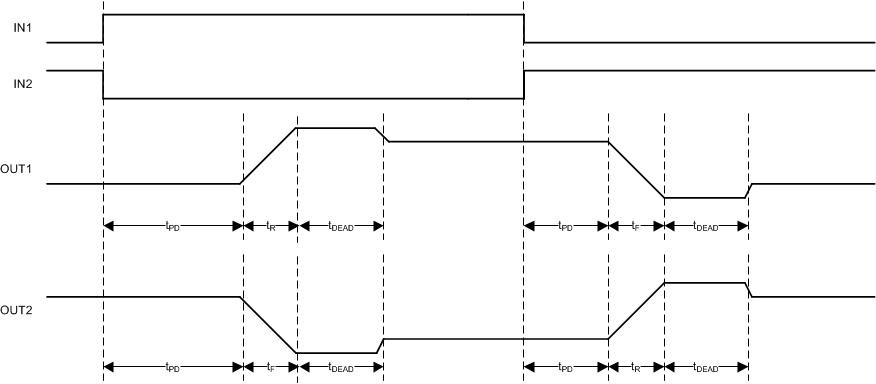SLVSCY9B August 2015 – July 2016 DRV8871
PRODUCTION DATA.
- 1 Features
- 2 Applications
- 3 Description
- 4 Revision History
- 5 Pin Configuration and Functions
- 6 Specifications
- 7 Detailed Description
- 8 Application and Implementation
- 9 Power Supply Recommendations
- 10Layout
- 11Device and Documentation Support
- 12Mechanical, Packaging, and Orderable Information
Package Options
Refer to the PDF data sheet for device specific package drawings
Mechanical Data (Package|Pins)
- DDA|8
Thermal pad, mechanical data (Package|Pins)
- DDA|8
Orderable Information
7.3.4 Dead Time
When an output changes from driving high to driving low, or driving low to driving high, dead time is automatically inserted to prevent shoot-through. tDEAD is the time in the middle when the output is High-Z. If the output pin is measured during tDEAD, the voltage will depend on the direction of current. If current is leaving the pin, the voltage will be a diode drop below ground. If current is entering the pin, the voltage will be a diode drop above VM. This diode is the body diode of the high-side or low-side FET.
 Figure 6. Propagation Delay Time
Figure 6. Propagation Delay Time